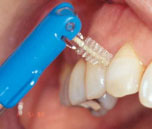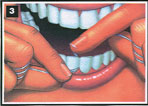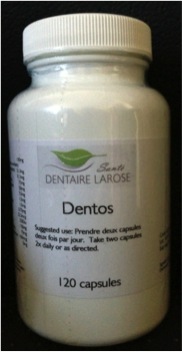TREATING GUM DISEASE
THE NATURAL WAY
Gum disease starts with "gingivitis" - a surface infection characterized by redness, swelling, tenderness and bleeding. Gum disease then progresses between the tooth and the gum to destroy the supporting bone around the teeth: we call this stage "periodontitis". These are mainly auto-immune diseases, most of the damages being caused by the uncontroled inflammatory response of the body in the periodontal "pocket" - the infected space between the tooth and the gum.
THREE SCHOOLS OF THOUGHT
All authorities agree on the importance of personal oral hygiene and the removal of local causative factors like plaque, tartar, defective fillings, incorrect bite, clenching, and smoking to control gum disease. The three schools of thought differ mainly on the surgical approach, the use of antibiotics and the role of nutrition.
1. CONVENTIONAL SCHOOL
Periodontists - dentists specializing in gum treatment - go through two years of post-graduate university training exclusively to treat gum disease. Their approach is to surgically eliminate periodontal pockets with the use of local and systemic antibiotics, if needed. The diseased gum and bone can be radically removed in order to give a cleansable architecture around the teeth. Patients can complain of longer teeth and sensitive roots following the treatment. In these cases, we often see gum diseases start all over again after a certain period of time unless the patient's resistance has been improved (stress, nutrition, lifestyle). This approach, therefore, is recommended for people who have corrected their unhealthy lifestyle habits.
2. MICROBIOLOGICAL SCHOOL
Doctors Keyes, Lyons and others have been able to demonstrate that it is possible to control many types of periodontal diseases by eliminating the bacteria, parasites and other micro-organisms in the periodontal pocket. Dentists who favor this school will use a microscope to periodically monitor the progress of the disease and the effectiness of the treatment. Local and systemic antibiotics are routinely prescribed.
Antibiotics may kill the bad germs but they kill the good ones as well, our oral and intestinal micro-flora, resulting in reduced absorption of nutrients, weakening of the immune system and increased resistance to antibiotics themselves. There is also the danger of interaction with other medication (birth control pills, etc).
Brushing with sodium biocarbonate and peroxyde and irrigating pockets with different antibacterial products is recommended. Patients are warned that gum diseases can be transmited by saliva; so patients are warned not to kiss any one on the lips during the active phase of disease! These techniques seem to work well as long as patients keep on religiously using antibacterial products and prescribed antibiotics. Again symptoms may reappear as soon as the patient returns to his old lifestyle habits. The approach is recommended to temporarily control the disease that is rapidly progressing.
3. HOLISTIC OR NATUROPATHIC SCHOOL
This school is based on an affirmation by Claude Bernard, a comtemporary of Pasteur: "The germ is nothing, the terrain is everything". Oral and dental health are considered here to be a reflection of general health. In this light, a gum infection becomes the local manifestation of a systemic problem. We believe that germs multiply in the periodontal pocket because it is a chronically inflammed environment with an acid pH and very little oxygen - an environment that promotes their growth. It is believed that the presence of bacteria is not the CAUSE but the CONSEQUENCE of the disease.
The treatment protocol will not include antibiotics - in order to avoid their ill effects - but rather stimulate the natural defenses and resistance of the host. Emphasis will be placed on improving lifestyle, nutrition (alcalizing foods), and supplementation - our Dentos supplement, for example - rather than eradication of bacteria and pockets. The Optimal blood analysis (1) will be used as a tool to monitor the patient's progress - rather than the disease. Often times, the patient will also heal other chronic inflammatory sites while being treated for his oral infection.
Brushing with sodium bicarbonade and peroxyde is also recommended. Pocket irrigation is done with herbal solutions rather than antibiotics and chemical antibacterials.
SUPPLEMENTATION
We often recommend taking four capsules a day of our gum and bone reconstructing supplementing Dentos - especially following a dental cleaning or surgery. Also, studies have shown that consuming two servings of fatty fish a week OR at least one capsule of fish oil a day provides enough EPA and DHA to support gum and bone health around teeth.
Patients who are treated is this way must be ready to invest a good amount of time and energy to understand what's going one in their bodies and change their lifestyle habits so that they may become healthier in the long run... and solve their gum problems at the same time! This is the approach we recommend!



